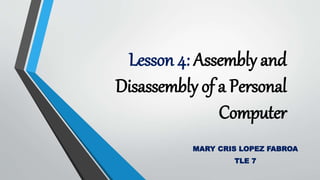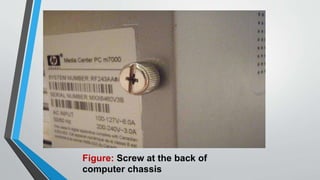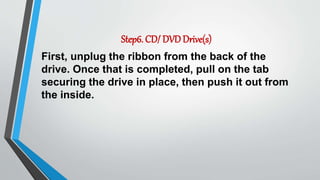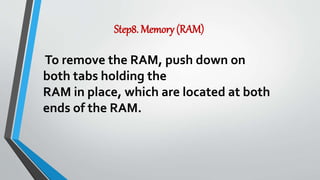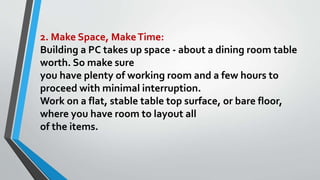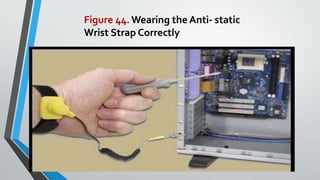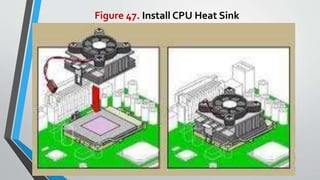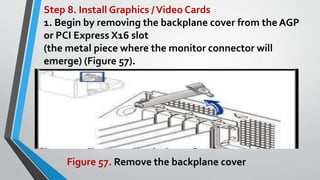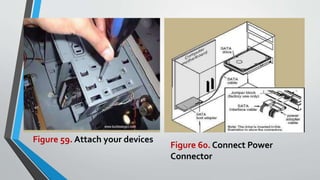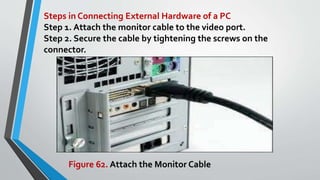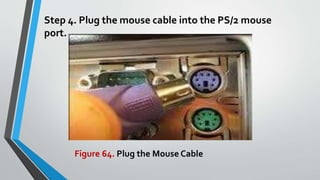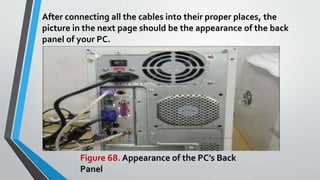This document provides step-by-step instructions for assembling and disassembling a personal computer. It begins with safely disassembling the computer by unplugging all cables, removing screws and side panels, and then removing additional internal components like fans, drives, memory and the motherboard. The document then details how to assemble the computer in reverse order, making sure to properly install components like the motherboard, CPU, memory, graphics card, drives, and connecting all necessary cables. The overall process is described in 10 steps and includes many diagrams to illustrate proper assembly techniques.
